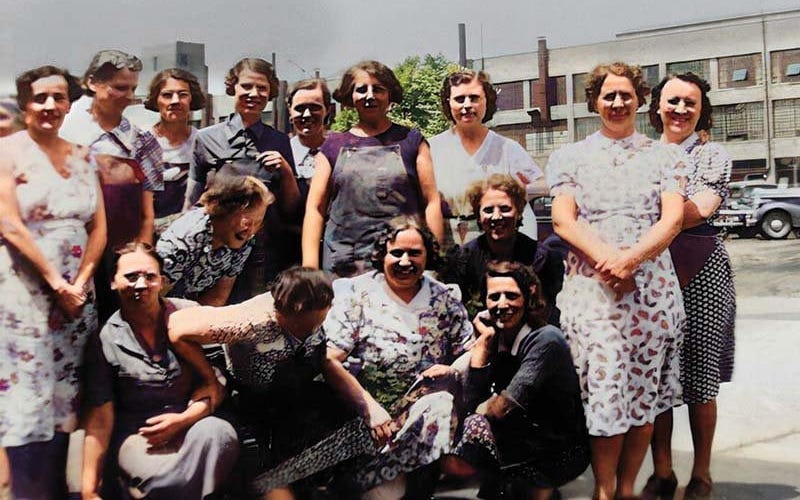Three Women Who Fought For Equal Pay
Some people think women have wage equality. They're wrong. We never have and we still don't.

Letters to the editor are nothing new. They appear all the time. But in February, 1869 The New York Times published a letter to the editor that tackled a heated topic.
The writer wanted to know why women government workers don’t get paid the same as men doing the exact same job. And she wanted the NYT to find her the answer.
Here’s what it said…
“Very few persons deny the justice of the principle that equal work should command equal pay without regard to the sex of the laborer. But it is one thing to acknowledge the right of a principle and quite another to practice it.”
— source: Time Magazine
The writer went on to say the U.S. Government employs 500 women in the Treasury department, but the women get paid half as much as men doing the same job.
She went on…
“Many of these women are now performing the same grade of work at $900 per annum for which men receive $1800. Most of them, too, have families to support; being nearly all either widow or orphans made by the war.”
— source: Time Magazine
1. Pretty safe to say a woman wrote that letter...
She had a solid point. Men went off to war and died. Then when their widows went out and got jobs to pay the bills and support their children, they got paid half what a man earned. For the same job. Because they were women.
Powerful men pretended to care.
In 1869, the House of Representatives passed a resolution to ensure equal pay to employees regardless of gender.
Of course, saying and doing aren’t the same. Lip service.
In 1909 women garment workers went on strike because they got paid less than men doing the same job.
In 1911, female teachers protested because they got paid less than male teachers doing the same job.
I could make a list of protests over wage discrimination that would read like a book.
Same old, same old.
2. Florence St. John and the Goodyear case…

In 1938, Florence St. John was a sheet metal worker. A 32-year-old mother of three, she worked elbow-to-elbow with men, levering heavy presses to bend and cut steel.
She dragged huge pans of car parts weighing up to 200 pounds. Men and women had the exact same quotas and the exact same jobs.
But for every $15 she earned, a man earned $20.
She knew, because they compared paychecks on the floor. They weren’t supposed to. If they got caught comparing wages, they’d lose their jobs. They did it anyway.
Finally, 29 women got together and sued. The case dragged on for 3 years. The women watched managers stand up in court and spout utter crap, like that men are just more “mechanically minded” and “physically” stronger. The women argued back. Quotas were the same. Job descriptions were the same. They did the exact same work. If a woman couldn’t do the job or meet the quotas, they were let go.
They won. On May 29, 1942, the case made national news. “29 Women Win $55,690 in Wage-Equality Ruling,” the New York Times announced.
Three years later, in 1945, Congress introduced the Women’s Equal Pay Act. The bill would make it illegal to pay women less than men for comparable work.
Except, the bill failed to pass Congress.
Nice try. No go.
In 1963, President Kennedy passed the equal pay act

In 1963, President Kennedy signed the equal pay act.
The Equal Pay Act is a labor law that prohibits gender-based wage discrimination in the United States. Equal pay for equal work. At least in theory.
It made all the national newspapers.
Women celebrated.
Corporations laughed.
Because here’s the problem. It puts the onus on the employee to report and sue their employer if they believe they are being paid unfairly based on gender.
You think I jest? Nope…
3. Lilly Ledbetter and the Fair Pay Act
Lilly Ledbetter was hired as a supervisor at Goodyear back in 1979. She worked there happily for 19 years. She was pretty proud of her accomplishments. Then one day, in 1998, someone slipped an anonymous note in her mailbox.
It listed the salaries of all the men doing the same job as her. She was livid.
All that time. She’d been getting paid less than men doing the same job.
In 1998, she filed a complaint with the Equal Employment Opportunity Commission and was instantly demoted. The case went to court. The jury originally decided in her favor, but Goodyear appealed based on a technicality.
The case went all the way to the Supreme Court.
Know what the technicality was?
Wage discrimination cases had to be filed within 180 days of receiving the first discriminatory paycheck. She was 19 years too late because she didn’t know. Employees weren’t allowed to discuss wages.
She lost the case. Shut down by The Supreme Court. Where do you go when the Supreme Court rules against you? Nowhere, I guess. It’s done.
When President Obama was elected, the first piece of legislation he signed was the Lilly Ledbetter Fair Pay Act. It’s an amendment that says the 180 day window to sue for wage discrimination “resets” after each paycheck is issued.
Now women have the right to report as sue for as long as they’re getting paychecks from the company who isn’t paying them fairly.
Do you think that solved the problem? Think again.
According to the United States Census, women still get paid less in every profession across the board.
A lot of people think women have wage parity now. Nope. Sorry. It varies by industry, sure. Nurses are a little closer. Judges — not so much.
Men are the green dots. Have a look...

We don’t get half anymore, like in 1869. But we have not reached wage parity.
Only 29% of American households exist on a man’s salary alone, but women still don’t get equal pay even though most households need their income. Sometimes desperately.
At the current rate of change, it will take 50 years before America closes the pay gap.
That wage gap costs women right into retirement. If a man and woman worked the same career their entire lives, by retirement the man will have earned over 400K more than the woman. And since retirement pay is based on income, she gets less again.
And that’s just in America. According to the United Nations, it will take 257 years to close the global gender pay gap.
At the current rate of climage change, I’m not sure we’ll get there.
“An 18 year old woman entering the workforce today will not see pay equality in her working lifetime. At the rate the gender pay gap is closing, it will take more than 50 years to reach gender pay parity.” — Larice Stielow, Economist




This is one of those persistently idiotic things about the world that should not continue to exist.
Looking at the chart, it's telling that the widest disparity is in Financial Managers and Judges/Judicial Workers - the folks who control the money and make the rules. Here we are in the 21st century with a long list of absurdities, including:
- Numerous inequalities between men and women without any justification
- Adjusting clocks twice a year to create more daylight for harvesting crops
- Allowing a fully developed male to dominate women's sports simply by declaring he is a woman
There are myriad other examples, as all women know. It's just wrong.